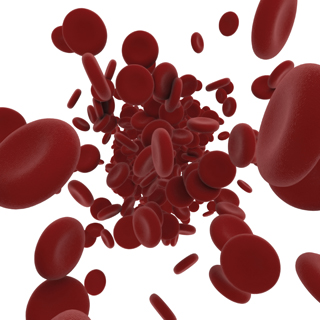Understanding the Hemoglobin and Myoglobin Dissociation Curves

The Hemoglobin and Myoglobin Dissociation Curves, when taken together, represent an important relationship in the delivery of oxygen to exercising muscle. Given that our Moxy Muscle Oxygen Monitor device measures the oxygen saturation of hemoglobin and myoglobin, this relationship is important to understand when interpreting data from Moxy.
The Path of Oxygen Delivery in the Body
The delivery of oxygen to tissue in the human body follows the following path:
- Oxygen is inhaled into the lungs
- Oxygen diffuses into the alveoli of the lungs
- Oxygen binds to hemoglobin in the blood in the alveoli
- The oxygenated hemoglobin travels through the arteries until it gets to the capillaries
- Hemoglobin releases oxygen in the capillaries according to the Hemoglobin Dissociation Curve
- Oxygen diffuses through the interstitial fluids and cell walls
- Oxygen is consumed by the mitochondria.
In muscle cells, there is an oxygen storage location along this path. Myoglobin is a molecule in the muscle that binds and releases oxygen according to the Myoglobin Dissociation Curve. This acts as a reserve of oxygen and can help facilitate the transport of oxygen.
When oxygen diffuses through interstitial fluids, the amount of oxygen dissolved in the fluid is called the Partial Pressure of Oxygen and is represented as PO2. Oxygen diffuses from areas with high levels of PO2 to areas with low levels of PO2.
The following table lists approximate PO2 levels at various locations:
|
Sea Level Air Partial Pressure of Oxygen |
159 mm Hg |
|
Alveoli (Lungs) |
100 mm Hg |
|
Capillaries |
50 mm Hg |
|
Mitochondria (where the oxygen is used) |
4 – 20 mm HG |
Source: Loiacono, Laurie A.; Shapiro, David S. “Detection of Hypoxia at the Cellular Level” Crit Care Clin 26 (2010) 409–421
The Hemoglobin and Myoglobin Dissociation Curves show the relationship between the PO2 in the fluids and the Oxygen Saturation of the oxygen binding molecules. Curves A and B in the graph below represent Hemoglobin and Myoglobin, respectively.

(photo)
The Myoglobin Dissociation Curve does not change significantly at normal physiologic chemistries. The Hemoglobin Dissociation Curve does shift left and right under physiologic conditions that normally occur during exercise.
Shifts in the Hemoglobin Dissociation Curve
The following 4 factors all cause the Hemoglobin Dissociation Curve to shift to the RIGHT.
- Decreasing pH (More Acidic)
- Increasing Temperature
- Increasing dissolved Carbon Dioxide
- Increasing DPG (diphosphoglycerate)
When the Hemoglobin Dissociation Curve shifts to the right, it allows the hemoglobin to release its oxygen more easily. This is important because this means that a low SmO2 (muscle oxygen saturation) value doesn’t always indicate that there is insufficient oxygen available for the mitochondria.
The converse of these factors causes the Hemoglobin Dissociation Curve to shift to the LEFT, which means that a high SmO2 value doesn’t always indicate there is plenty of oxygen available for the mitochondria.
The two most important factors in exercise are the pH and the dissolved carbon dioxide. Both of these factors can change significantly during exercise. The level of dissolved carbon dioxide can also be readily manipulated by changes in breathing.
Understanding the Hemoglobin and Myoglobin Dissociation Curves and the factors that shift them will help you better understand how to Train with Moxy.

